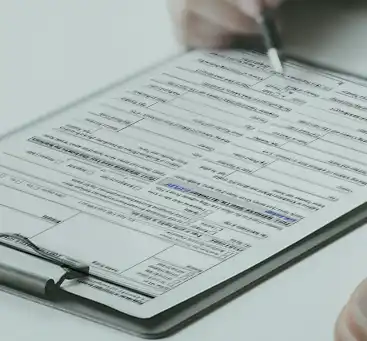MON – FRI (8am - 6pm)
Form I-730 is an immigration form that allows refugees and asylees in the United States to apply for family reunification. Through this form, applicants can request the entry of their spouses and unmarried children under 21 years old to join them in the U.S. See how Form I-730 looks.
The importance of Form I-730 lies in its ability to provide a legal and secure pathway for family members to reunite and continue their lives together in a more stable and safer environment.


Family reunification through Form I-730 is crucial for maintaining the unity and well-being of families affected by forced displacement. This process ensures that family members can receive the protection they need.
Family unity is essential for the successful integration of refugees and asylees into American society, and Form I-730 provides a legal framework to ensure this unity is maintained.
The psychological impact of family separation can be profound. The trauma of fleeing persecution is often exacerbated by the anxiety and uncertainty of being separated from loved ones. For many asylees, the ability to reunite with family members is a crucial step in the healing process. Form I-730 facilitates this by offering a structured path to reunification.
To be eligible to submit Form I-730, the individual must be the principal applicant (PA) who has been granted asylum or refugee status in the U.S.
Another criterion for the applicant is the time frame within which they must file Form I-730. USCIS requires that the form be submitted within two years of the principal applicant being granted asylum.
This time limit is strictly enforced to ensure timely family reunification. The two-year period is designed to provide sufficient time for the applicant to gather the necessary documentation. However, exceptions to this deadline can be made in cases where there are compelling humanitarian reasons. These exceptions must be well-documented and justified within the application.

Beneficiaries of Form I-730 must be the spouse or unmarried children under 21 years old of the principal applicant. It is important that the applicant’s marriage to the spouse occurred before the grant of refugee or asylee status, and that the parental relationship with the children is properly documented.
Additionally, the children must remain unmarried and under 21 years of age at the time of form submission. Applicants must provide birth certificates, marriage certificates, and other civil documents to prove the legitimacy of the family relationship. The accuracy and completeness of the documentation provided are key to the success of the application. For personalized legal advice, reach out to .Serving Immigrants.

All documents not in English must be accompanied by a certified translation to be accepted by USCIS.
Additionally, it is advisable for applicants to keep copies of all submitted documents for their personal records, in case USCIS requests additional information or discrepancies arise.
Precision and consistency in documentation are essential to avoid delays in the process. It is also important to ensure that the photographs submitted meet the specific requirements of USCIS regarding size, background, and quality so that they are accepted without issues.
This section outlines the essential documents required to complete Form I-730, ensuring eligibility for family reunification under U.S. immigration law for refugees and asylees.
The principal applicant must provide documentation that confirms their status as a refugee or asylee in the United States. This includes a copy of the asylum approval letter issued by USCIS or Form I-94, which indicates the individual’s classification as a refugee (with the code RE).
The birth certificate should include the names of the parents, which helps USCIS verify the biological relationship. In cases where the birth certificate is not available, secondary evidence such as school records or affidavits may be necessary. If the certificate is not in English, a certified translation must accompany the original document.
The certificate should show that the marriage occurred before the principal applicant was granted refugee or asylum status. The document must be legally recognized by the country in which the marriage took place. If the marriage certificate is in a language other than English, it must be accompanied by a certified translation.
The application must include recent passport-style photographs of the beneficiary. These photos must adhere to the U.S. Department of State’s requirements, including size, background, and quality. Typically, the photos should be 2x2 inches, with a plain white background, and must be taken within the last six months.
If the principal applicant or the beneficiary has undergone a legal name change, documentation must be provided to reflect this change. This could include court orders, marriage certificates (if the name change is due to marriage), or any other legal documentation that shows the previous and current names.
The translation must accurately reflect the content of the original document and must be certified by the translator as complete and accurate. The translator must also certify that they are competent to translate from the foreign language into English.
In cases where the beneficiary is an adopted child, legal documentation proving the adoption is required. This includes an adoption decree issued by a competent authority in the country of origin, which must show that the adoption took place before the child’s 16th birthday.
Form I-94, issued to non-citizens when they enter the U.S., records the arrival and departure information of the individual. The principal applicant must include this form to provide evidence of their refugee status or asylum status upon entry to the U.S. Find out more about Form I-94 by clicking here.
The process for submitting Form I-730 can be done either online or by mail. For online submission, the applicant must create an account on the USCIS website, complete the form digitally, and upload the required documents. Mailing submission requires that the form be printed, completed manually or digitally.
Additionally, it must be sent along with all supporting documents to the appropriate USCIS Service Center, which may be in Texas or Nebraska, depending on the applicant’s state of residence. It is crucial to follow USCIS instructions closely to ensure the application is processed smoothly. Failure to comply with these instructions could result in delays or even the denial of the application. Seeking legal advice? Serving Immigrants offers expert assistance.
The processing time for Form I-730 varies depending on several factors, including USCIS workload and the complexity of the case. Generally, the process can take between 5 and 12 months from the date of submission to completion. During this period, USCIS may issue Requests for Evidence (RFE) if it considers the documentation submitted insufficient.
Responding promptly and thoroughly to these requests is crucial to avoid further delays in the process. Additionally, applicants can check the status of their application online using the receipt number provided by USCIS.

Below you will find the most frequently asked questions regarding Form I-730, along with detailed answers to each. This section covers common inquiries to help applicants.
Only the principal refugee or asylee, not derivative beneficiaries, can submit Form I-730 for family reunification.
An expert attorney is crucial for the Form I-730 process because they ensure accurate submissions, handle legal complexities, and increase the chances of a successful family reunification.
No, Form I-730 only allows you to petition for unmarried children under 21 years old.
After Form I-730 is approved, the beneficiary will attend a consular interview, undergo a medical exam, and receive a boarding pass to travel to the U.S., where final admission is decided.
The beneficiary will be interviewed by a USCIS or consular officer to verify identity, relationship, and eligibility for entry.